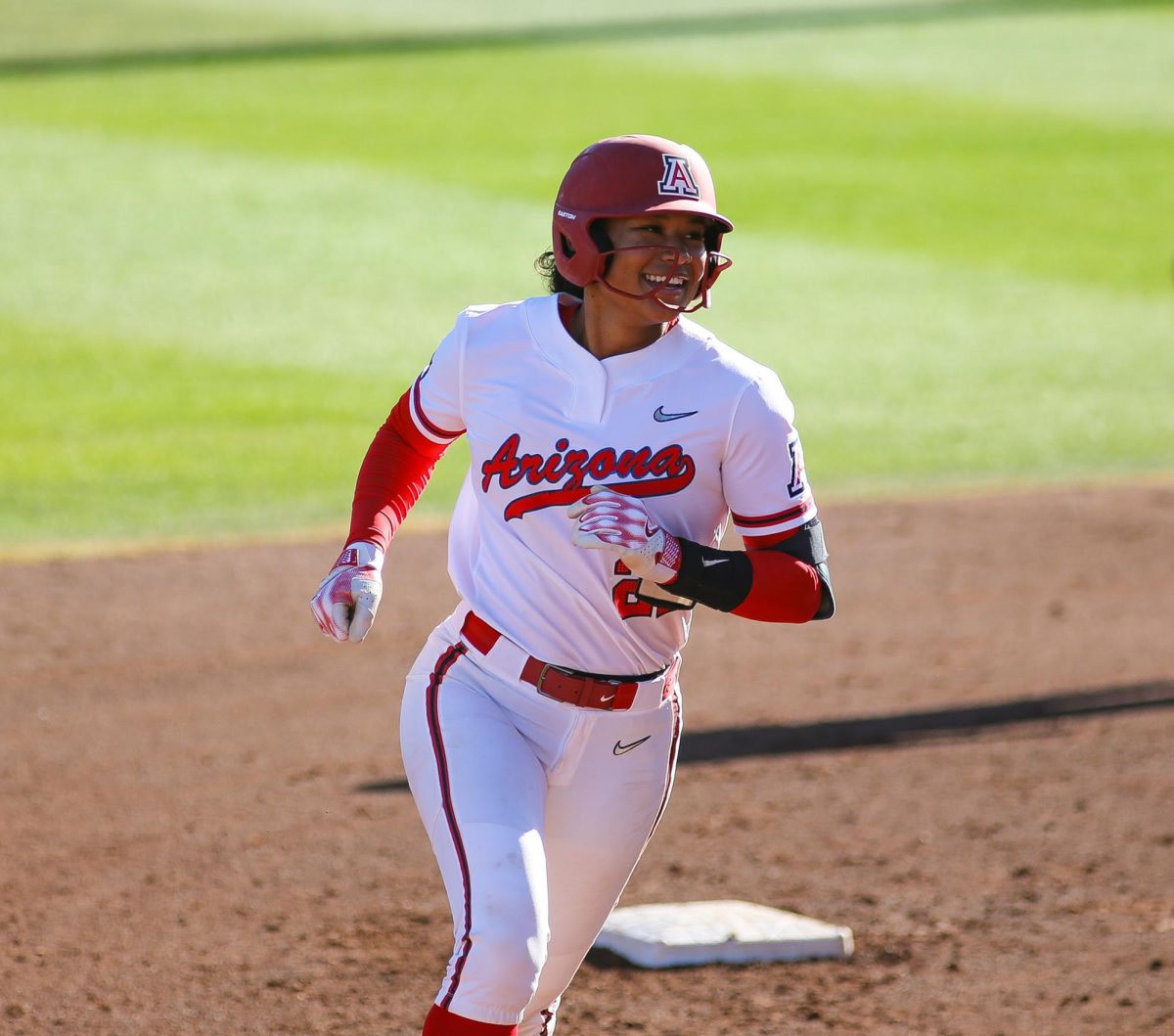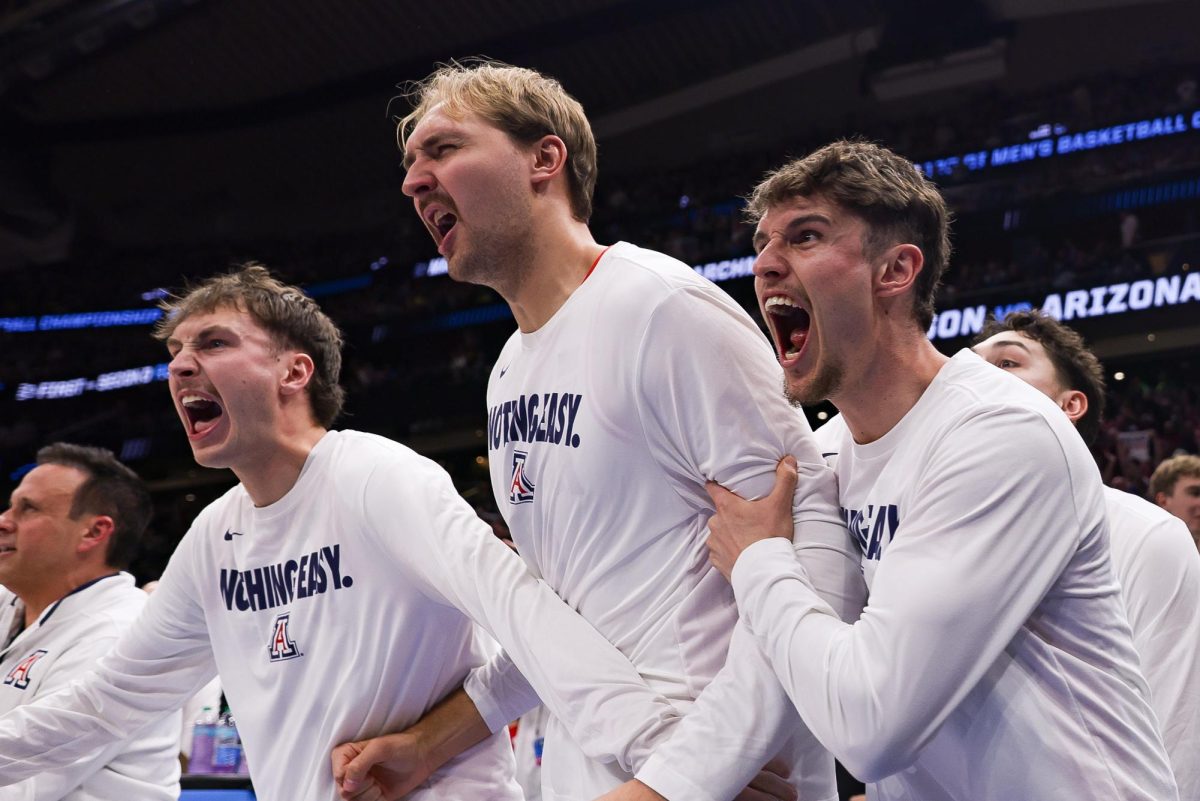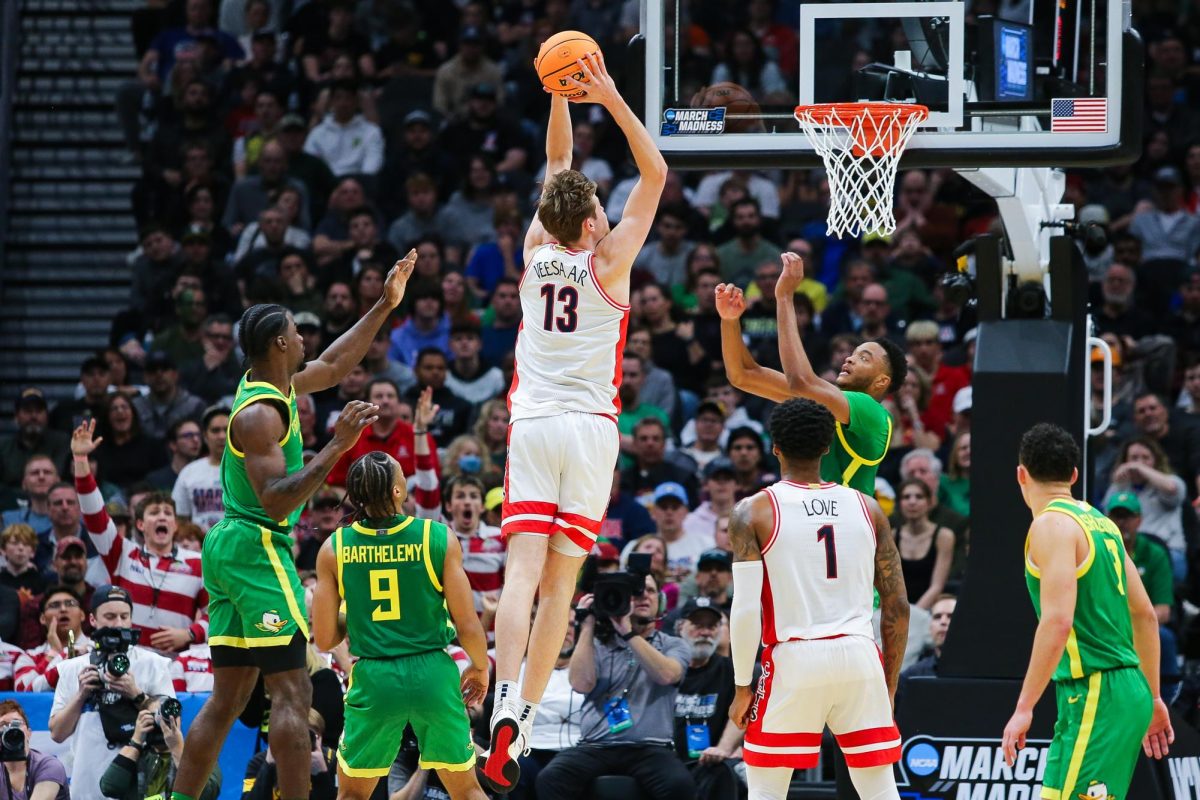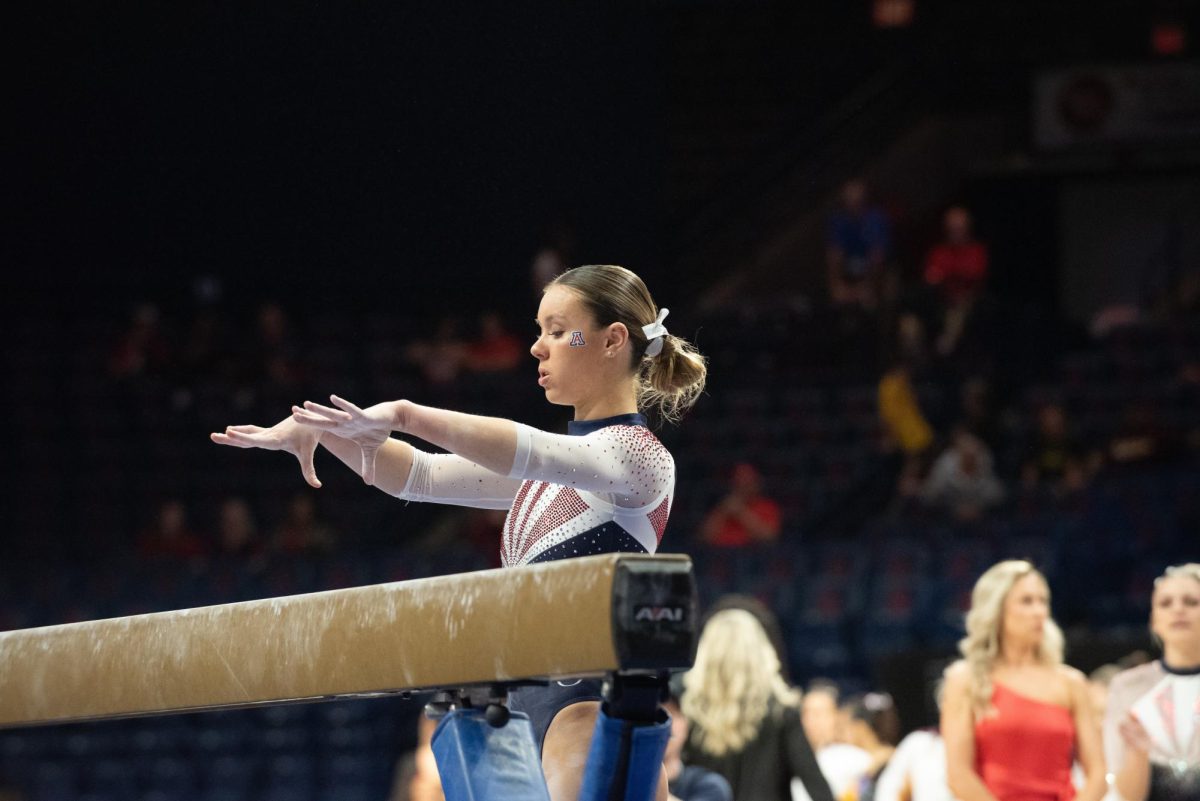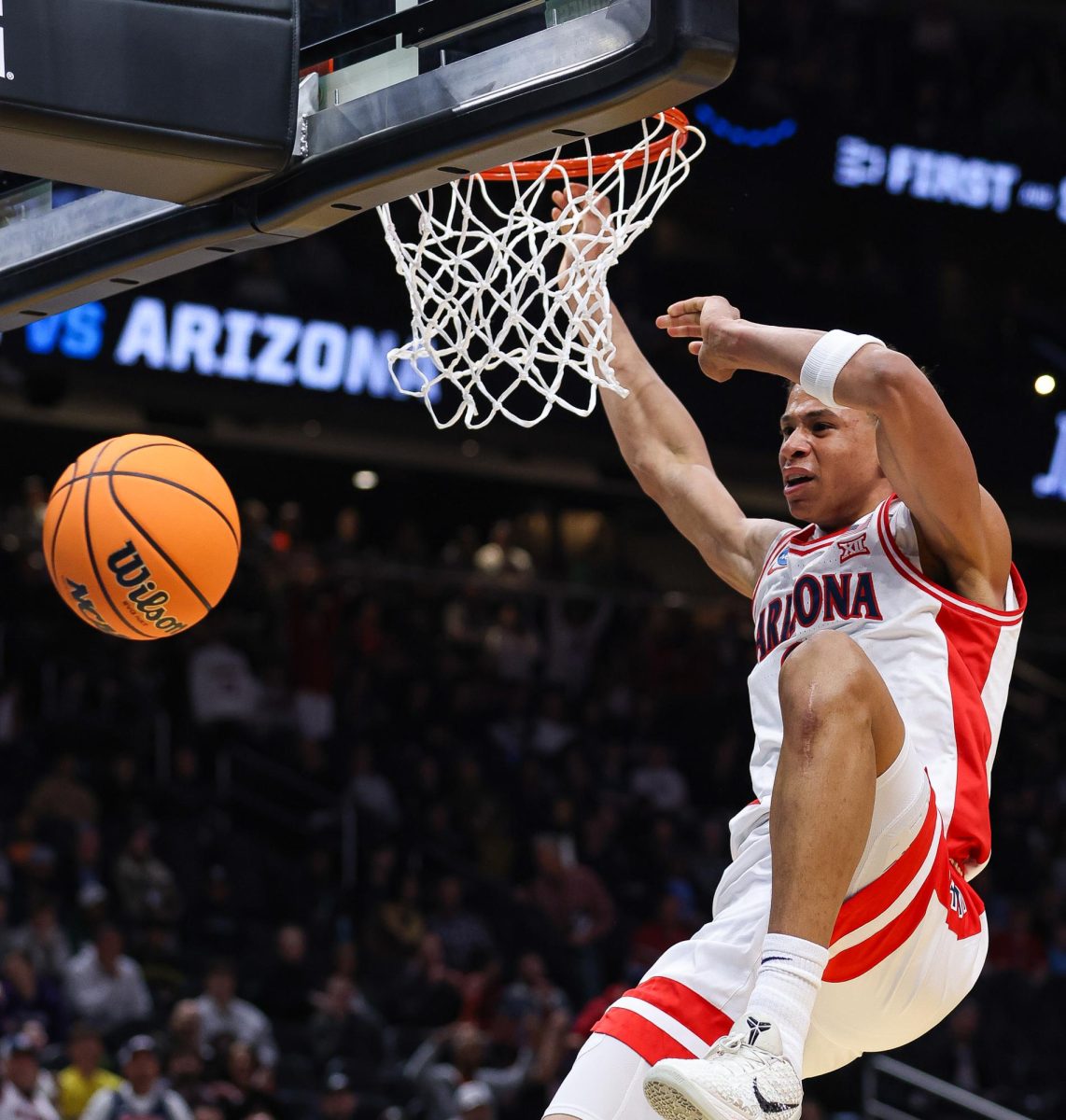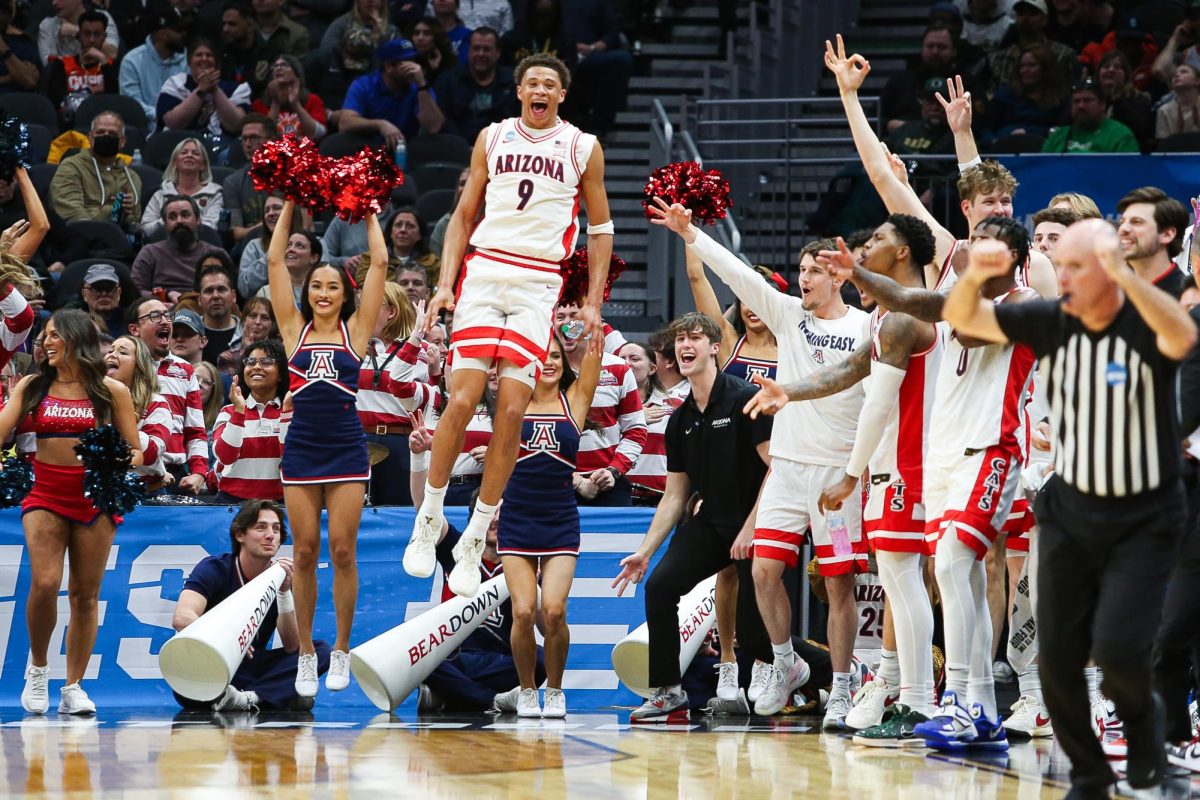John Wall of Kentucky. Evan Turner of Ohio State. Kyle Singler of Duke.
Some of the most exciting names in March’s Madness await the biggest stage in college athletics this weekend.
Then you’ve got Greg Byrne of Arizona.
The 38-year-old Byrne would be considered a freshman among his league of athletic directors.
Arizona Athletics’ newly-hired CEO officially receives a formal introduction this morning in Tucson after agreeing to a five-year deal worth at least $1.9 million before incentives.
A lot to invest in a freshman, no?
“”He’s young. I think it’s no exaggeration to say he’s one of the rising stars in athletics across the nation,”” said UA President Robert Shelton.
Byrne replaces a guy old enough to be his father — 16-year Arizona veteran Jim Livengood, 64, best known for balancing UA’s budget in the nation’s most difficult financial climate.
Livengood poured the foundation to revitalize UA’s facilities — new football stadium renovations slated to become on par with the rest of the Nike-driven Pacific 10 Conference.
He knows Nike.
Now comes Byrne, who spent time at Oregon and Oregon State — twice proving immunity through in-state rivalries.
Byrne graduated as a Sun Devil in 1994, so education wasn’t Shelton’s biggest emphasis in the search process.
Such are the statements The Freshman must endure as the Wildcat Nation commander.
“”There are not many opportunities that would tempt me to leave Mississippi State,”” Byrne said. “”But when Arizona called I owed it to my family to listen. Arizona is one of the truly elite programs. They have great traditions, great support from their fans and a deeply-rooted commitment to helping student-athletes succeed.””
So now it comes down to paying the bills. Maintaining the near-$50 million budget and fundraising, fundraising, fundraising are priority number one for Byrne, just as they are in every other athletic department.
UA football could someday evolve into a complimenting cash cow standing side-by-side with Arizona’s historic hoops program, ranked in the top 10 of Forbes Magazine’s most lucrative basketball schools.
The Freshman has already raised more than $120 million in gifts during his career, named a full-time athletic director just three years ago at Mississippi State.
Not so freshman after all.
Priority number two becomes graduation rates: UA athletics records an embarrassing Pac-10 worst year after year.
The NCAA allows each athlete six years to earn a degree, giving prognosticators the most recent data from 2002, an era UA officials claim to have already been overhauled by revitalized academic efforts.
In an interview earlier this semester, then-interim UA athletic director Kathleen “”Rocky”” LaRose said she’s sick of using that excuse and knows this year’s numbers will shed away UA’s bad rap.
Just for fun: Arizona’s 54-percent student-athlete graduation rate was lower than Mississippi State’s 66 percent.
“”He has done a great job both on the athletic side and on the academic side,”” Shelton said. “”He is someone that I think fits in with the model of a student athlete, the way indeed that all of our coaches and our athletic staff celebrate both the academic and athletic side of what it means to be a student athlete here at the University of Arizona.””
Without coaching vacancies or unplanned facilities, it’s just cash and grades to make the desert Byrne.
— Bryan Roy is an interdisciplinary studies junior. He can be reached
at sports@wildcat.arizona.edu.



